Where is the market headed?
The market continues to remain sluggish, possibly awaiting clarity on ongoing global disputes. While there is some hope that the US Fed might cut rates, it’s increasingly likely they won’t — with the outcome expected tonight, Wednesday the 18th. Overall, there seems to be a lack of enthusiasm across sectors. The market appears to have hit a resistance zone, beyond which it has been unable to break. For now, it’s drifting within a narrow range, with short-term momentum rotating between sectors.
Market Overview
The market remains in limbo. It briefly touched around 24,950 but gave up most of the gains to close in the red, down 0.17%. No significant losses were seen, but there were no meaningful gains either. It was essentially a flat day.
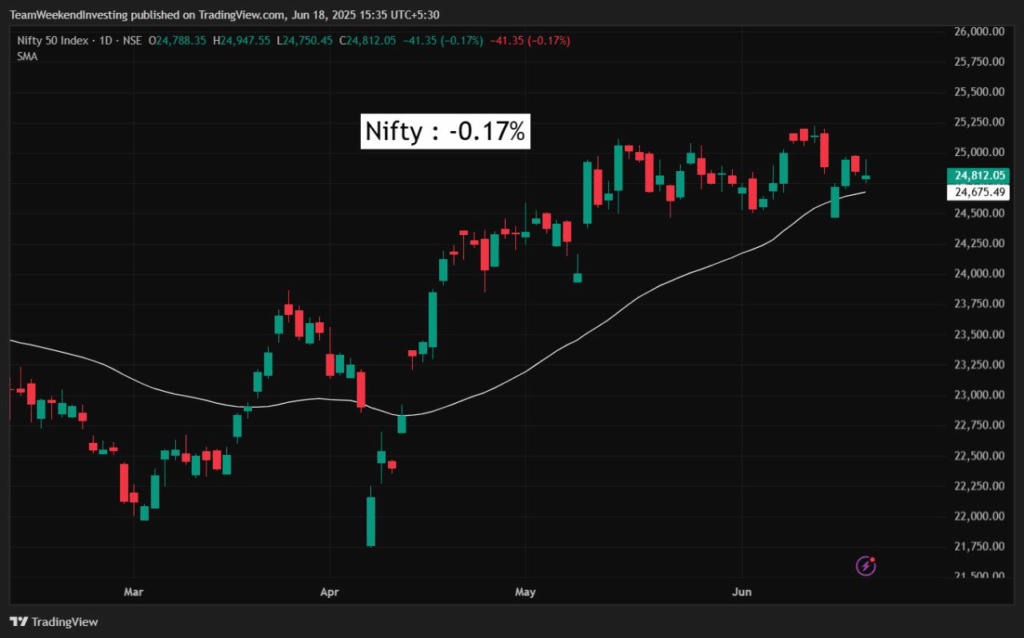
Nifty Next 50
Nifty Junior closed lower by 0.31%
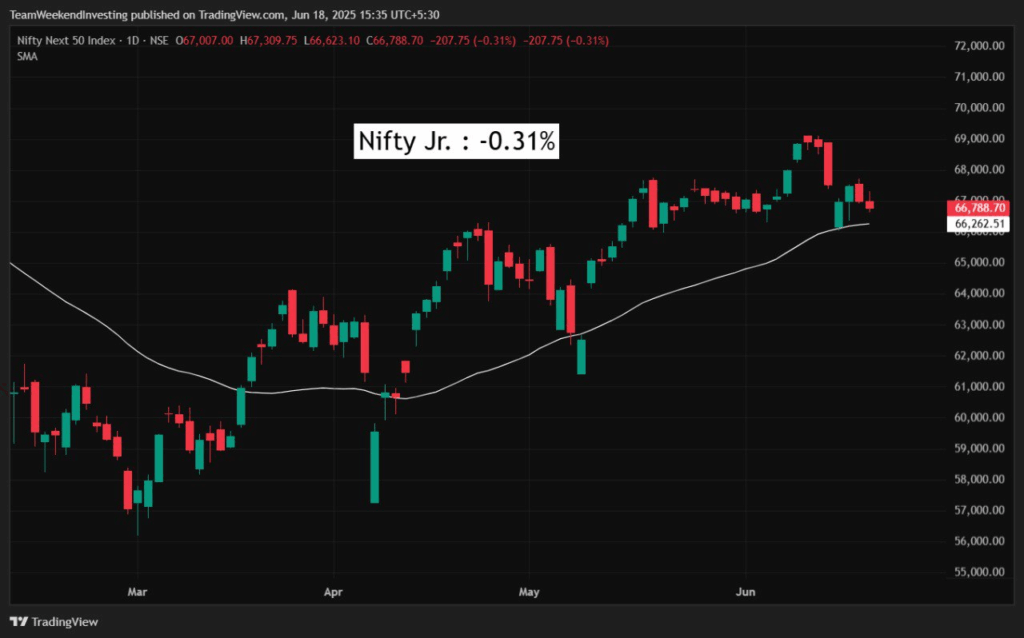
Nifty Mid and Small Cap
Mid-caps slipped nearly 0.5%, indicating some pressure in the broader market.
Small-caps also declined slightly, down by about 0.2%.

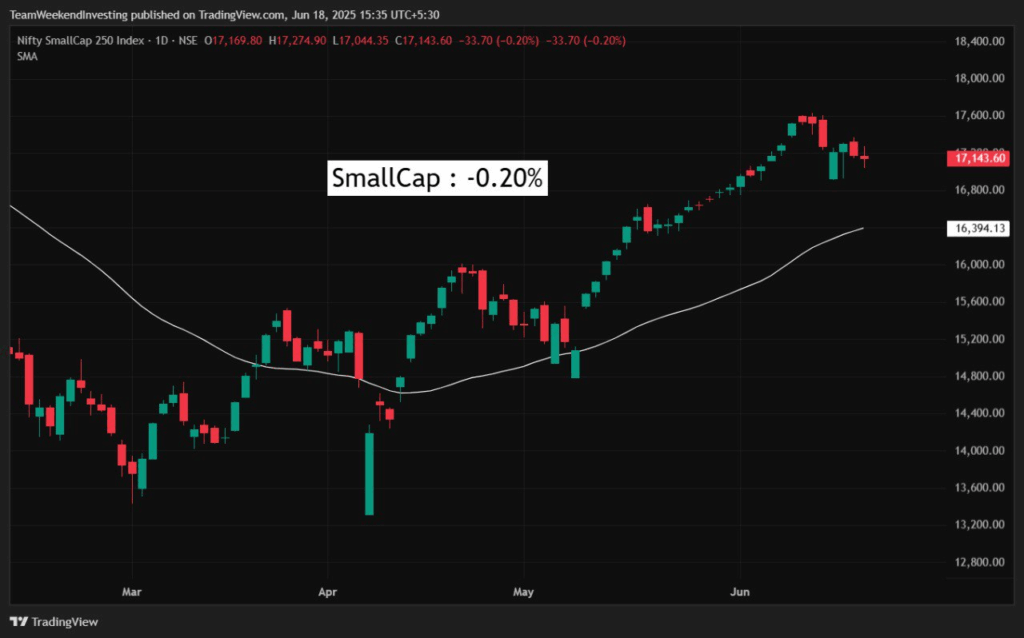
Bank Nifty
Nifty Bank found support at its moving average and managed a modest recovery, closing up by 0.21%.
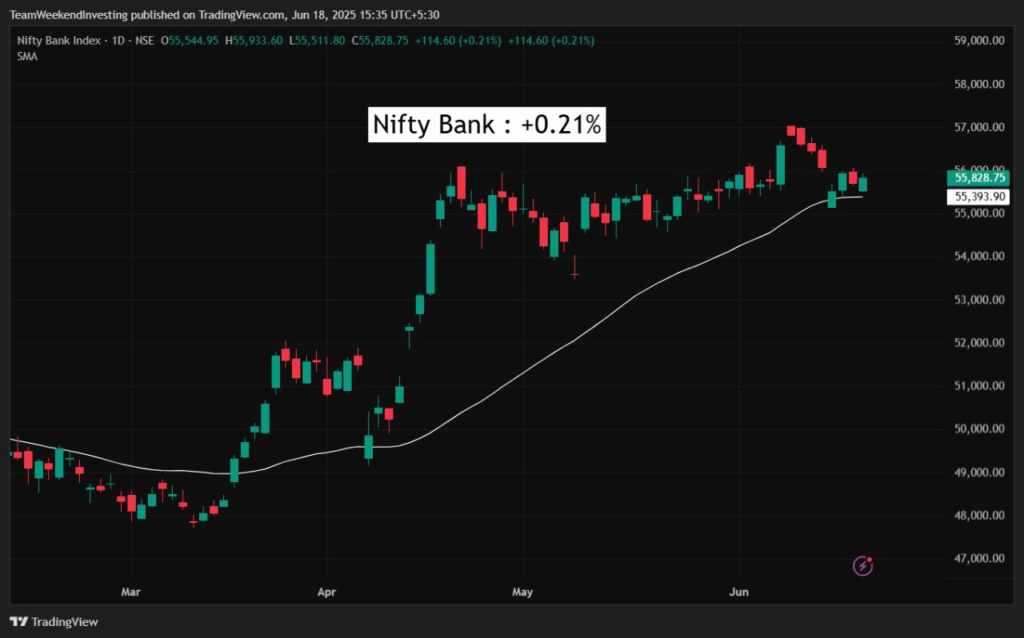
GOLD
Gold remained absolutely flat today, while the rupee continued to slip, now hovering around 9950.
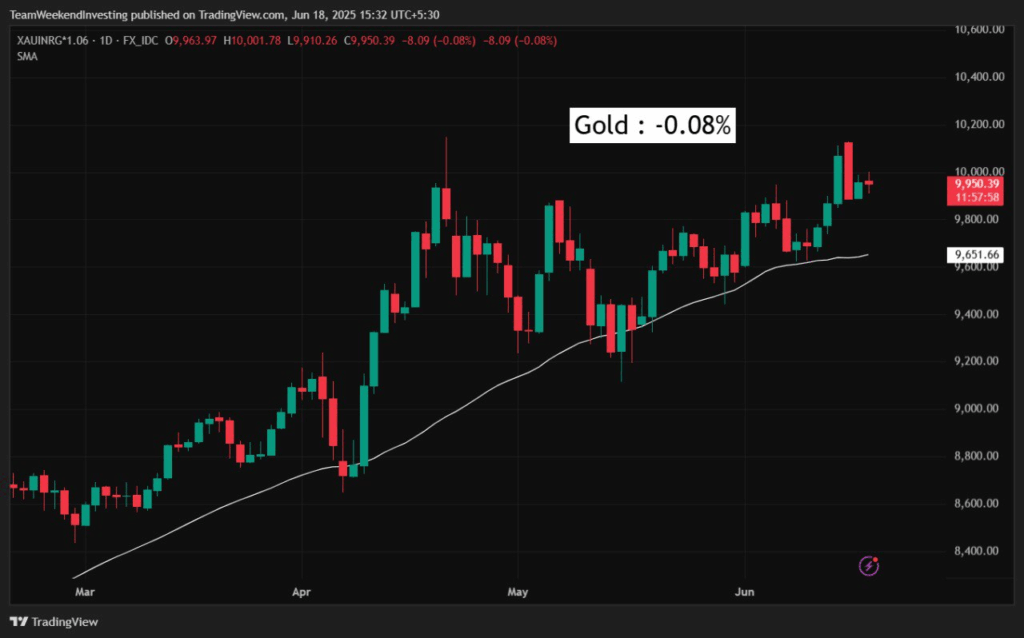
Advance Decline Ratio
The advance-decline ratio weakened through the day. While advances started off reasonably well, they lost ground as the session progressed. By the close, advances stood at 169, while declines rose sharply to 330.

Heat Maps
There wasn’t much visible uptrend across sectors today. Pharma stocks, which had dropped yesterday on news of potential Trump tariffs, remained flat in absence of further updates. IT stocks followed global tech weakness as US markets fell, and FMCG also continued slipping amid reports of weakening demand, contrary to official data.
In the Nifty Next 50, Dmart, Swiggy, Chola Finance, Siemens, and ICICI General Insurance did well. However, many others like PFC, REC, GAIL, Pidilite, HAL, and DLF declined—DLF notably failed to rise despite announcing ₹11,000 crore in sales in just a week. LIC, IRFC, Bajaj Holdings, and several other stocks witnessed declines today.
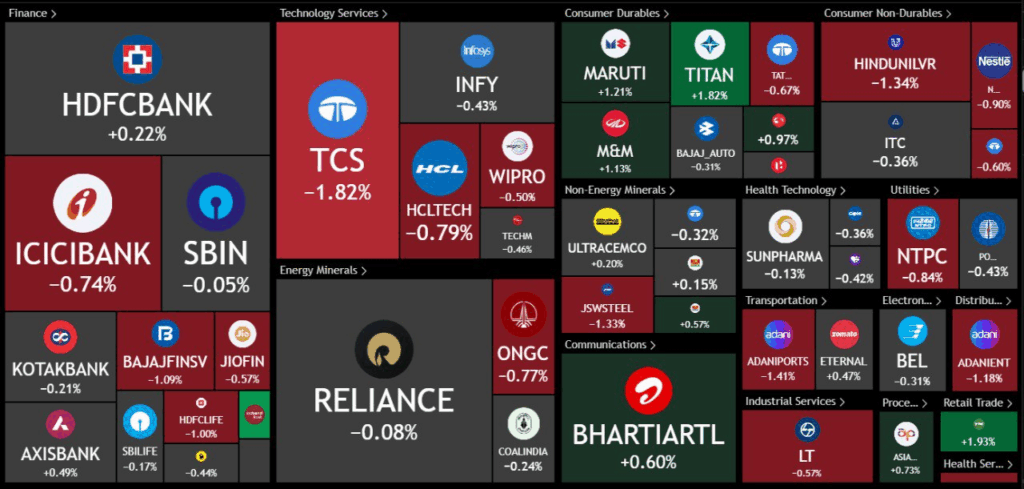
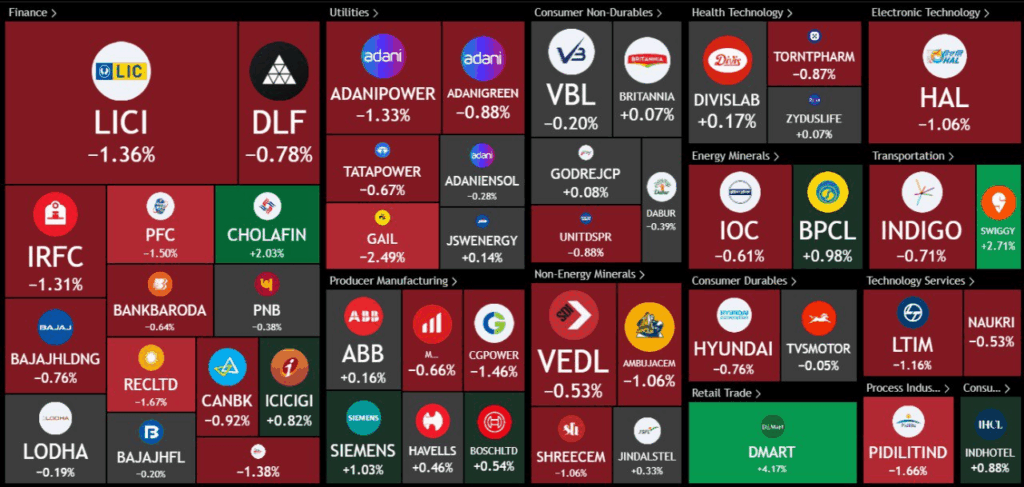
Sectoral Overview
Sectorally, media dropped the most at 1.2%, followed by capital markets down 0.8%, led by BSE Ltd., which opened gap down and partially recovered. BSE’s fall—from ₹3,000 to around ₹2,600—is being linked to weekly expiry changes, with NSE now benefitting from expected higher volumes. Private banks and Autos were marginally positive at 0.39% and 0.37%, though Auto gains faded despite early optimism around alternate sourcing of Chinese components. Nifty Bank rose 0.2%, and consumption stocks edged up just 0.16%, both largely flat in real terms.
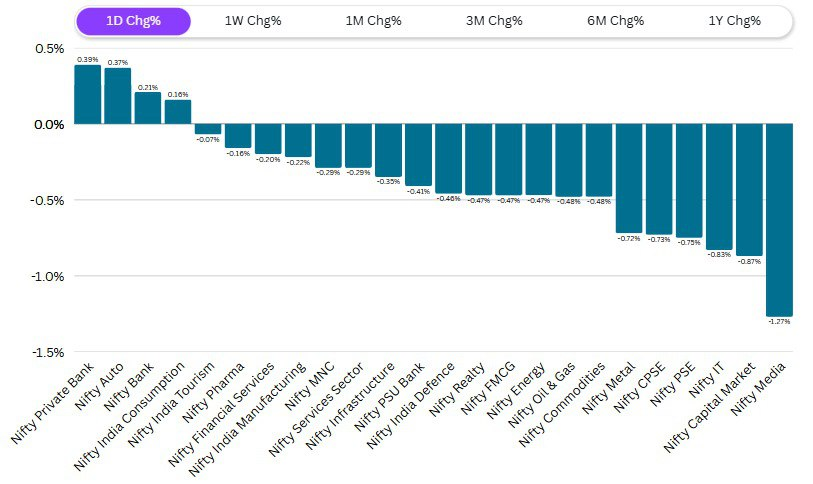
Sector of the Day
Nifty Media Index
In the media sector, key stocks like Saregama, Zee Entertainment, Hathway, TIPS, and D.B. Corp saw notable declines, making media the biggest losing sector of the day.
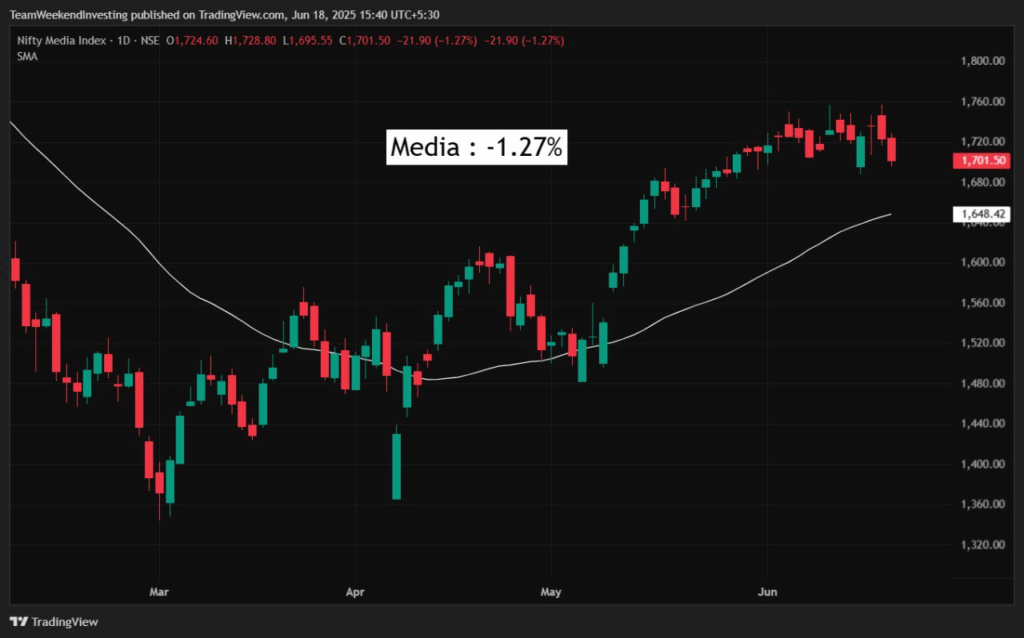
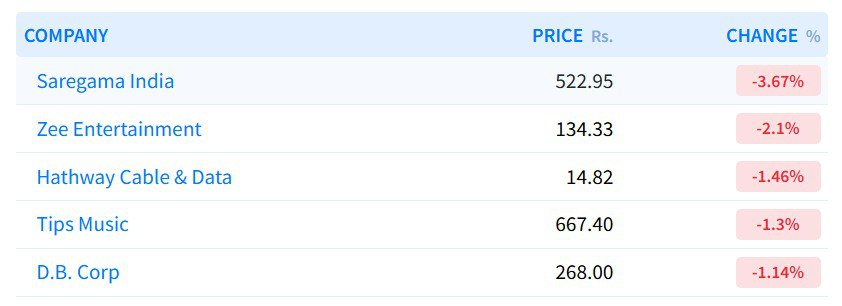
Story of the Day: The Winner’s Curse
What is the winner’s curse? Imagine a jar filled with coins being auctioned to a group of eager bidders. The person who bids the highest wins—but here’s the catch: that bidder is also the one most likely to have overestimated the value inside the jar. Say the jar contains ₹200 worth of coins, but the winning bid is ₹400, driven by a combination of uncertainty and the fear of missing out. This overpayment is the essence of the winner’s curse.
This behavioural bias doesn’t just play out in coin jars or auctions—it’s seen in real-world events like the IPL auctions. Teams have historically paid exorbitant amounts for star players, expecting match-winning performances. A notable example was Yuvraj Singh’s ₹16 crore acquisition, which failed to deliver proportional returns. It’s a textbook case of overpaying in a competitive environment, fuelled by emotion and hype rather than rational evaluation.
The stock market sees similar patterns, especially in discretionary investing styles. Consider IPOs like Paytm, which was allotted at ₹2,150 and listed at a steep discount—eventually collapsing to ₹400.
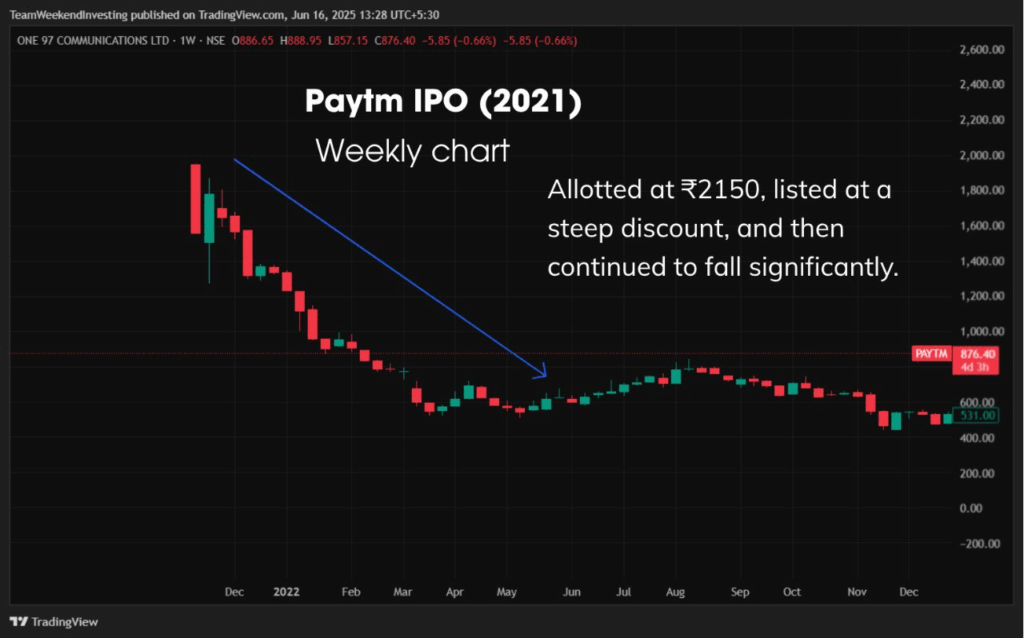
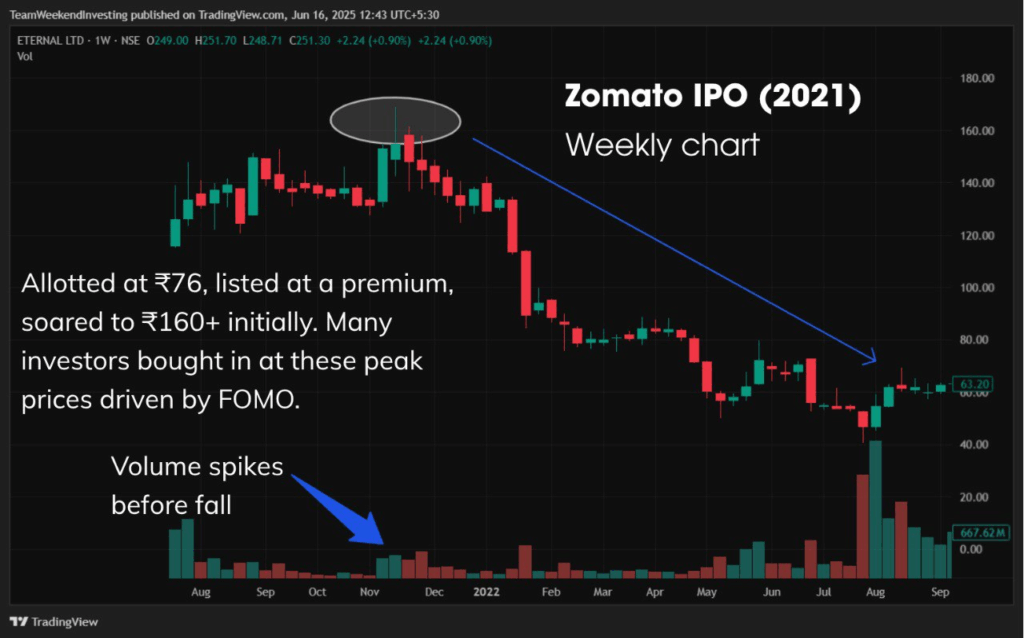
Zomato, Nykka, and Ola followed similar trajectories, driven by market euphoria and investor FOMO. Overvaluation at listing led to significant value erosion shortly after.
Sectors also face this phenomenon. In 2024, hot sectors like PSUs and energy surged due to speculation, only to see sharp corrections—often trapping latecomers who bought near the peak.
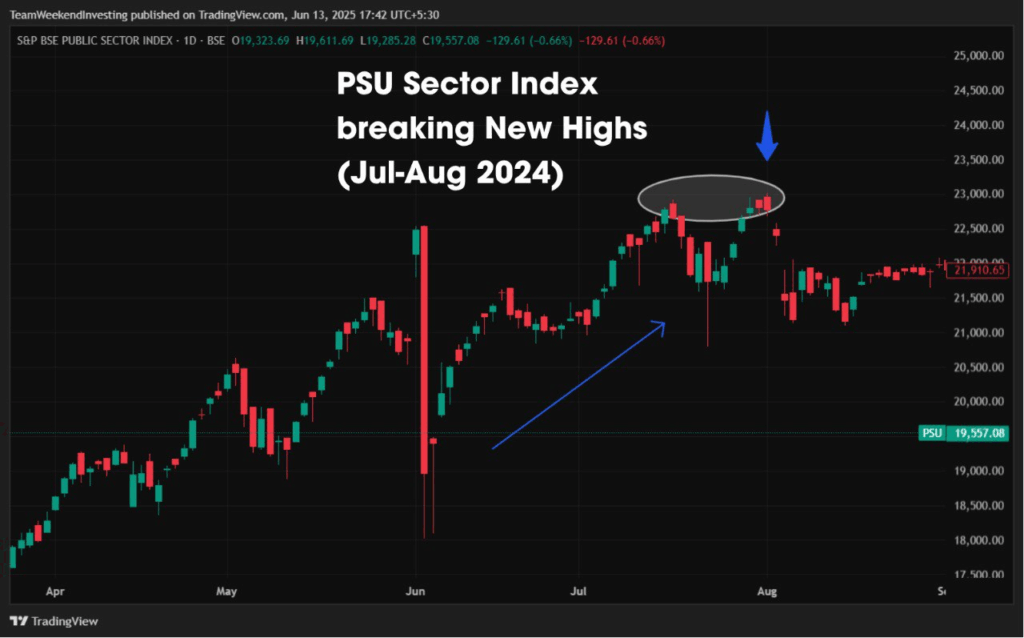
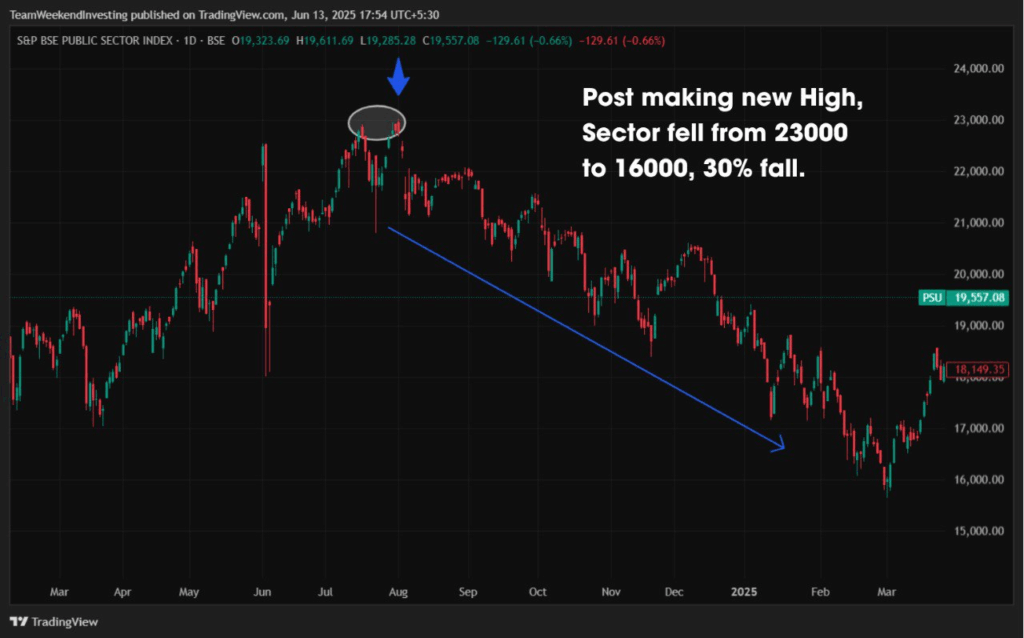
In bull runs, people often join the rally without a plan, driven by the narrative of others doubling or tripling their money. This creates a dangerous situation where investors buy high without a strategy to manage the downside.
Even in the case of the Nifty, buying at all-time highs can be a double-edged sword.
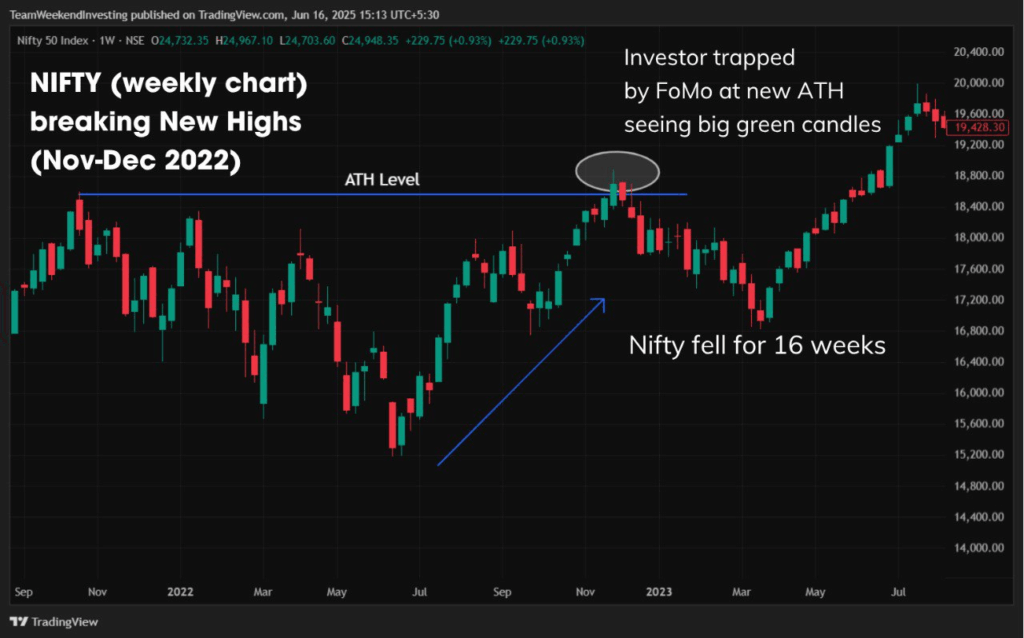
At times, it works well—but in many instances, investors get trapped near the top. There are numerous cases where such entries have led to significant drawdowns.
Momentum investing, on the other hand, is often mistaken for this behaviour but differs crucially: it includes an exit strategy. Momentum traders buy at highs too—but with well-defined stop-loss rules and risk control mechanisms.
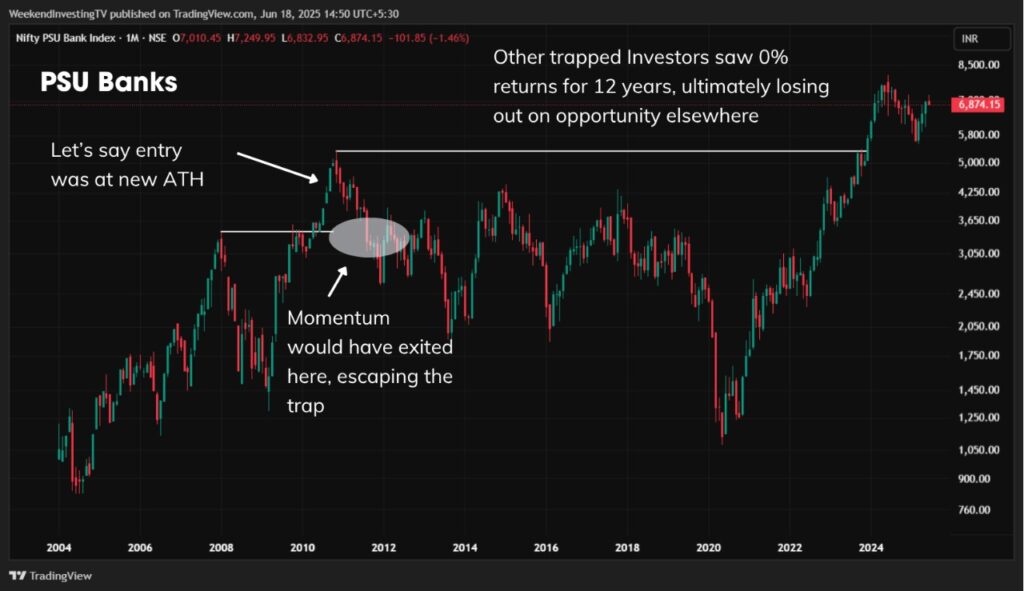
The key is not just about entering a rally, but knowing when and how to exit if the tide turns.
The winner’s curse is ultimately a powerful behavioural trap. Most retail investors fall into it—not because they lack intelligence, but because they lack discipline and emotional detachment. When a stock bought at ₹100 falls to ₹20, the average investor waits—sometimes for years—for it to recover, rather than accepting the loss and moving on.
The solution lies in building awareness, having robust systems in place, and investing with discipline. The market will always offer tempting stories and surging stocks. The question is—can you catch the upside without becoming the person who marks the top?
Have you ever experienced the winner’s curse yourself? Let us know your thoughts in the comments.







